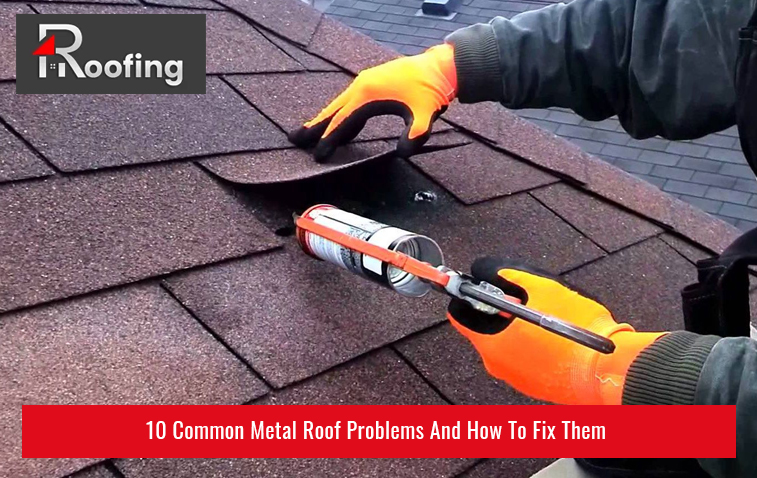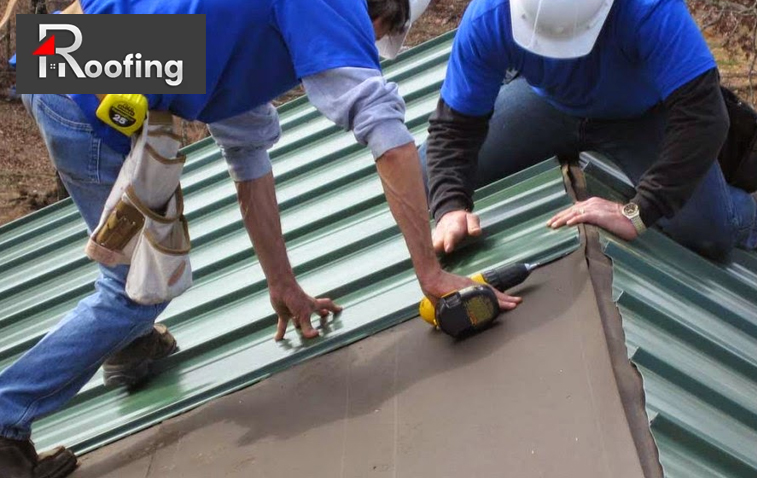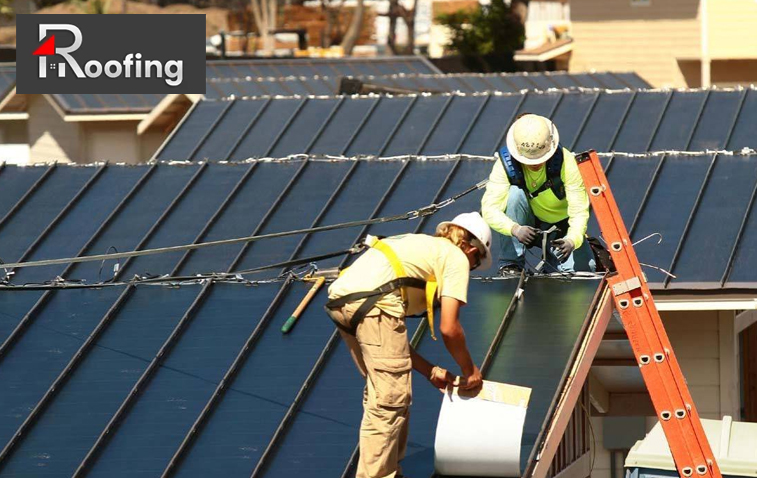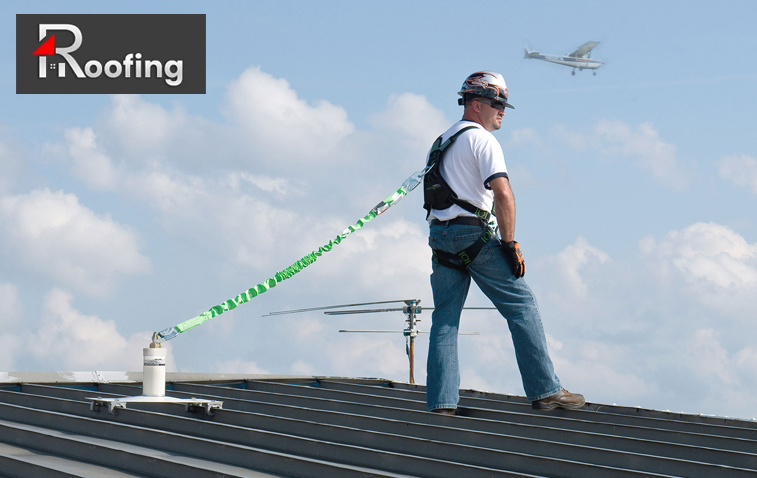10 Common Metal Roof Problems and How to Fix Them
Metal roofing problems can be a headache for homeowners, but understanding the common issues with metal roofs can help you stay ahead of potential damage. Common problems with metal roofs include rust, leaks, and damaged seams. These metal roof issues often stem from poor installation, weather conditions, or lack of maintenance. By identifying and addressing these problems early, you can ensure your metal roof remains durable and long-lasting. Learn how to fix these issues with metal roofs and keep your home protected.

Leaks and Water Damage
Leaks are a common issue with any type of roofing, including metal roofs. Water can seep through gaps, cracks, or improperly sealed joints, leading to damage inside your home.
Causes:
- Improper Installation: Gaps and cracks can occur if the roof is not installed correctly.
- Damaged Sealants: Over time, the sealants used to waterproof the roof can deteriorate.
- Weather Damage: Severe weather, such as heavy rain, snow, or wind, can cause leaks.
Fixes:
- Identify Leak Sources: Conduct a thorough inspection to identify the source of the leaks. Look for gaps, cracks, or damaged areas.
- Replace Sealants: Remove old, deteriorated sealant and apply a new, high-quality sealant to affected areas.
- Repair or Replace Damaged Panels: If the metal panels are damaged, they may need to be repaired or replaced. Ensure proper sealing around new panels.
Rust and Corrosion
Rust and corrosion create significant concerns for metal roofing, particularly in areas with high humidity or salt exposure.
Causes:
- Poor Maintenance: Failure to clean and maintain the roof can lead to rust and corrosion.
- Exposure to moisture: Constant exposure to moisture, especially in coastal areas, can accelerate rusting.
- Scratches and Dents: Physical damage to the protective coating can expose the metal to elements that cause rust.
Fixes:
- Regular Cleaning: Clean the roof regularly to remove debris, dirt, and algae. This helps prevent rust formation.
- Rust Treatment: Treat small rust spots with a wire brush to remove the rust, then apply a rust-inhibiting primer and paint.
- Protective Coatings: Apply a protective coating to the metal roof to prevent rust and corrosion. Consider galvanizing or using rust-resistant metals like aluminum or zinc.
Oil Canning
Oil canning is a visible distortion or waviness in the flat areas of metal roofing panels. While it doesn’t typically affect the roof’s functionality, it can be aesthetically unpleasing.
Causes:
- Thermal Expansion: Changes in temperature cause the metal to expand and contract, leading to oil canning.
- Improper Installation: Incorrect installation techniques, such as over-tightening screws, can cause stress on the panels.
- Material Quality: Lower-quality metals are more susceptible to oil canning.
Fixes:
- Proper Installation: Ensure that the metal roof is installed correctly with appropriate fasteners and spacing to allow for thermal expansion.
- Use High-Quality Materials: Choose high-quality, thicker metal panels to reduce the likelihood of oil canning.
- Stiffening Ribs: Incorporate stiffening ribs or striations in the metal panels to provide additional strength and reduce waviness.

Loose or Missing Fasteners
Fasteners, such as screws and nails, are crucial for securing metal roofing panels. Over time, these fasteners can become loose or go missing, compromising the roof’s integrity.
Causes:
- Thermal Expansion and Contraction: The constant expansion and contraction of the metal can loosen fasteners.
- Improper Installation: Fasteners that are not installed correctly can come loose.
- Wear and tear: Regular wear and tear can cause fasteners to deteriorate or go missing.
Fixes:
- Regular Inspection: Inspect the roof regularly to check for loose or missing fasteners.
- Tighten or Replace Fasteners: Tighten loose fasteners and replace any that are missing or damaged.
- Use Quality Fasteners: Use high-quality, corrosion-resistant fasteners to ensure they remain secure over time.
Scratches and Scuffs
Scratches and scuffs on metal roofing panels can expose the underlying metal to moisture, leading to rust and corrosion.
Causes:
- Installation and Maintenance: Scratches can occur during installation or maintenance if tools or equipment damage the panels.
- Debris Impact: Falling debris, such as branches or hail, can cause scratches and scuffs.
- Foot Traffic: Walking on the roof can lead to scuffs and scratches, especially if proper footwear is not used.
Fixes:
- Touch-Up Paint: Use touch-up paint to cover scratches and scuffs. This helps protect the exposed metal and maintain the roof’s appearance.
- Protective Coatings: Apply protective coatings to prevent scratches and scuffs from causing rust and corrosion.
- Careful Maintenance: Be cautious during maintenance and installation to avoid damaging the panels. Use proper footwear and tools to minimize the risk of scratches.
Improper Flashing Installation
Flashing is used to seal joints and edges on the roof, such as around chimneys, vents, and skylights. Improperly installed flashing can lead to leaks and water damage.
Causes:
- Poor Installation: Incorrect installation techniques can result in gaps and improper sealing.
- Wear and Tear: Over time, flashing can deteriorate, become loose, or get damaged.
- Temperature Changes: Thermal expansion and contraction can cause flashing to shift or become loose.
Fixes:
- Inspection and Repair: Regularly inspect flashing for signs of damage or wear. Repair or replace damaged flashing to ensure a proper seal.
- Professional Installation: Hire a professional roofer to install flashing correctly. Proper techniques and materials are essential for effective flashing.
- High-Quality Materials: Use high-quality, durable flashing materials that can withstand temperature changes and environmental factors.
Condensation Issues
Condensation can occur when warm, moist air comes into contact with the cooler underside of the metal roof, leading to moisture buildup and potential damage.
Causes:
- Poor Ventilation: Inadequate ventilation can trap moisture inside the roof space.
- Temperature Differences: Significant temperature differences between the interior and exterior of the roof can cause condensation.
- Insufficient Insulation: Lack of proper insulation can exacerbate condensation problems.
Fixes:
- Improve ventilation: Ensure the roof space is adequately ventilated to allow moisture to escape. This can be achieved with ridge vents, soffit vents, or gable vents.
- Add Insulation: Proper insulation helps regulate the temperature inside the roof space and reduce condensation.
- Vapor Barriers: Install vapor barriers to prevent warm, moist air from reaching the cooler metal surface.

Blow-Offs and Wind Damage
Strong winds can lift, detach, or even blow off metal roofing panels, especially if they are not properly secured.
Causes:
- Improper Installation: Incorrect fastening techniques or insufficient fasteners can make the roof susceptible to wind damage.
- Extreme Weather: Severe storms and high winds can exert significant pressure on the roof.
- Aging Roof: Older roofs with worn or weakened fasteners are more vulnerable to blow-offs.
Fixes:
- Secure Fastening: Ensure the roofing panels are properly fastened with the appropriate number and type of fasteners. Follow manufacturer guidelines for wind resistance.
- Reinforcement: Reinforce the roof edges and vulnerable areas to withstand high winds.
- Regular Inspection: Conduct regular inspections, especially after storms, to check for any signs of wind damage or loose panels.
Fading and Discoloration
Exposure to the sun’s UV rays, weather elements, and pollutants can cause the color of metal roofing panels to fade or discolor over time.
Causes:
- UV Exposure: Prolonged exposure to sunlight can degrade the pigments in the paint, leading to fading.
- Environmental Factors: Pollution, acid rain, and other environmental factors can cause discoloration.
- Material Quality: Lower-quality paints and coatings are more prone to fading and discoloration.
Fixes:
- High-Quality Coatings: Use high-quality, UV-resistant paints and coatings that are designed to withstand environmental exposure.
- Regular Cleaning: Clean the roof regularly to remove pollutants and debris that can contribute to discoloration.
- Repainting: If the roof has faded significantly, consider repainting it with high-quality paint to restore its appearance.
Noise Issues
Metal roofs can be noisier than other types of roofing materials, especially during rain, hail, or when subjected to thermal expansion and contraction.
Causes:
- Rain and hail: The impact of raindrops and hailstones on the metal surface can create noise.
- Thermal Movement: expansion and contraction of the metal due to temperature changes can cause popping or creaking noises.
- Insufficient Insulation: Lack of proper insulation can amplify the noise from the metal roof.
Fixes:
- Sound Dampening: Install sound-dampening materials, such as insulation or noise-reducing underlayment, to minimize noise.
- Proper Fastening: Securely fasten the roofing panels to reduce movement and associated noise.
- Roof Design: Consider roof designs and materials that reduce noise, such as textured or thicker metal panels.
Conclusion
Metal roofing offers numerous benefits, including durability, energy efficiency, and aesthetic appeal. However, it’s essential to be aware of common metal roofing problems and how to address them to maintain a long-lasting, effective roofing system. By understanding and addressing issues such as leaks, rust, oil canning, and improper installation, you can ensure your metal roof remains in excellent condition for years to come. Regular inspections, proper maintenance, and professional installation are key to a successful metal roofing experience.




